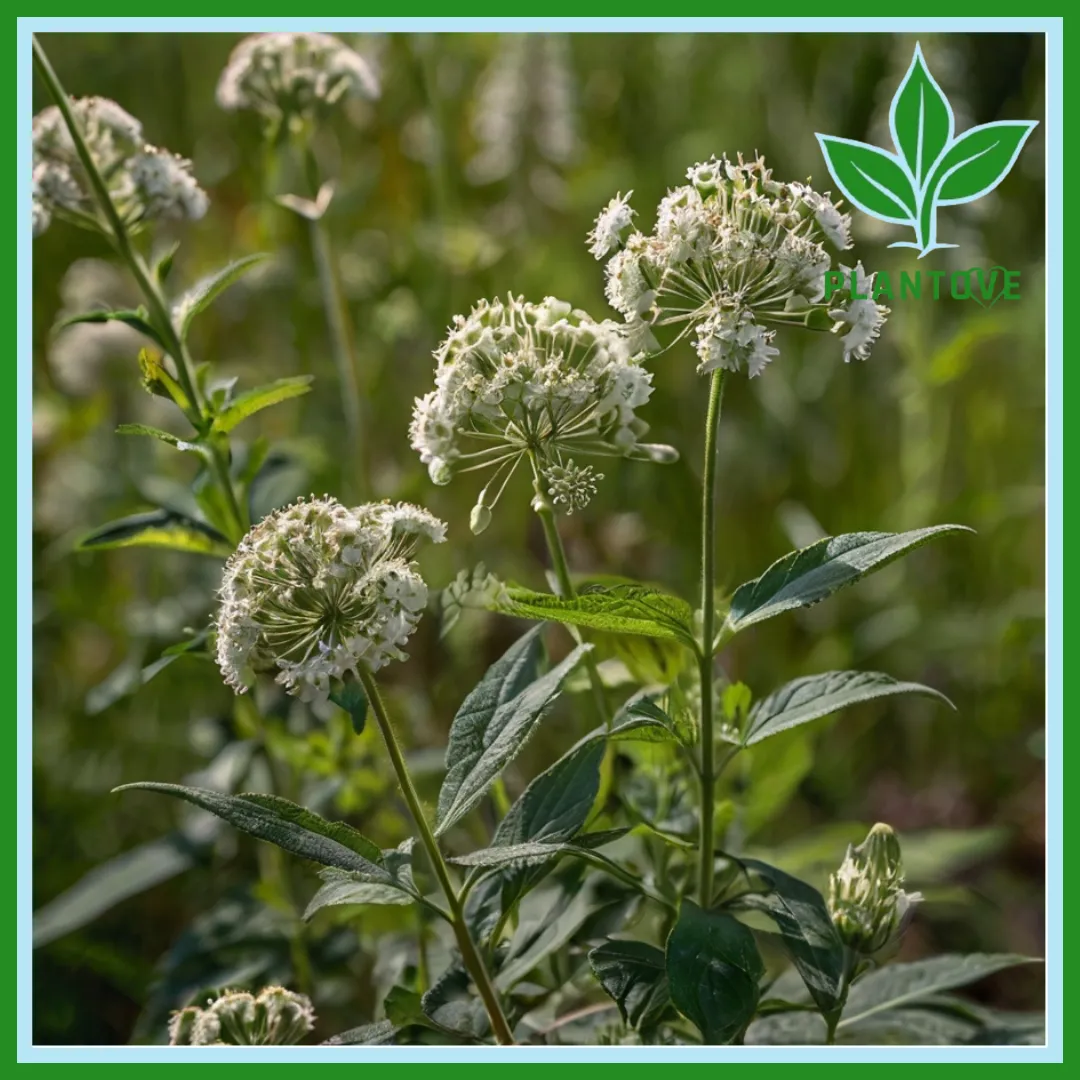The Boneset plant (Eupatorium perfoliatum) is a fascinating species that has been used for centuries in traditional medicine. Known for its medicinal properties and striking appearance, this plant is a favorite for gardeners and herbalists alike. Whether you’re interested in the benefits of the Boneset plant or learning about how to grow it in your garden, this guide will cover everything you need to know, including potential risks and the best ways to propagate it from seeds.
What is the Boneset Plant?
The Boneset plant is a perennial herb native to North America. It typically grows in wetlands and meadows, thriving in areas with moist soil. The plant produces clusters of white or pale flowers from late summer to fall. With its medicinal history, the Boneset plant has long been used by Native Americans and early settlers to treat various ailments, including fevers, colds, and flu. However, it’s essential to be cautious when using the plant, as it can be poisonous in large quantities.
Historical Significance
Historically, the Boneset plant earned its name because it was used to treat “breakbone fever,” a severe type of influenza. People believed that the plant helped “set” the bones after such a high fever caused intense muscle pain. Though the medical world has evolved, many herbalists still use the Boneset plant in their practices today, especially in natural remedies for flu-like symptoms.
Boneset Plant Benefits
The Boneset plant is renowned for its numerous health benefits, especially in herbal medicine. Whether taken as a tea, tincture, or extract, it has been said to help alleviate a variety of conditions.
Immune Support
One of the most commonly touted benefits of the Boneset plant is its ability to boost the immune system. Due to its anti-inflammatory and antipyretic properties, it is often used to help treat colds, fevers, and respiratory infections. This makes the plant a popular choice during flu season, as it may reduce the severity and duration of symptoms.
Pain Relief
Another significant benefit of the Boneset plant is its pain-relieving properties. The plant has been used to ease muscle pain, joint pain, and even headaches. It’s thought that its anti-inflammatory effects may play a role in this benefit, making it useful for people suffering from conditions like arthritis or muscle aches from illness.
Detoxification
The Boneset plant is also known for its ability to promote detoxification. Herbalists believe it stimulates the kidneys and liver, helping the body to eliminate toxins more effectively. This detoxifying effect is another reason the plant is commonly used during bouts of illness, as it may help cleanse the body of pathogens.
Boneset Plant Poisonous: Understanding the Risks
While the Boneset plant has many benefits, it’s crucial to understand that it can also be poisonous if not used correctly. Some compounds in the plant can be toxic, especially when consumed in large amounts. Additionally, the plant contains pyrrolizidine alkaloids, which are known to be harmful to the liver if taken over an extended period. Therefore, proper preparation and dosage are critical.
Safe Usage
Although the Boneset plant has toxic properties, it can be used safely when taken in moderation. Most herbalists recommend using the dried form of the plant rather than fresh leaves, as drying reduces the toxicity. Additionally, you should always consult a healthcare professional before using Boneset plant remedies, particularly if you have pre-existing health conditions or are taking medications.
Signs of Poisoning
Symptoms of Boneset plant poisoning may include nausea, vomiting, dizziness, and in more severe cases, liver damage. If you suspect you’ve ingested too much of the plant or are experiencing these symptoms, seek medical attention immediately.
How to Grow the Boneset Plant
Now that you’re aware of both the benefits and risks of the Boneset plant, let’s explore how you can grow it in your own garden. Growing this plant from seeds is a straightforward process, but it requires attention to specific growing conditions to thrive.
Boneset Seeds: Getting Started
When growing the Boneset plant from seeds, it’s essential to start them indoors about six weeks before the last frost date. You can also sow the seeds directly in the garden after the frost has passed. The seeds need light to germinate, so do not cover them with soil. Simply press them into the surface and water them gently.
Soil and Watering Needs
The Boneset plant prefers moist, well-drained soil, making it ideal for gardens in wetter climates or near bodies of water. If you live in a drier area, be sure to water the plant regularly to maintain the necessary moisture levels. However, avoid waterlogging the soil, as this can lead to root rot.
Light Requirements
Though the Boneset plant can tolerate partial shade, it thrives best in full sunlight. Therefore, choose a spot in your garden that receives at least six hours of direct sunlight each day. If your garden has a lot of shade, you may want to consider planting the Boneset plant in pots so you can move them to sunnier spots as needed.
Pruning and Maintenance
The Boneset plant can grow quite tall, reaching up to 4-6 feet. Regular pruning will help control its height and encourage fuller growth. Additionally, removing spent flowers will promote new blooms, keeping the plant looking its best throughout the growing season.
Companion Planting with Boneset
The Boneset plant is a great companion for other wetland or moisture-loving plants. Since it attracts beneficial insects like bees and butterflies, it’s an excellent addition to a pollinator garden. You can plant it alongside species like milkweed, joe-pye weed, and swamp milkweed to create a habitat that supports local wildlife.
Harvesting Boneset Plant for Herbal Use
If you’re interested in using the Boneset plant for medicinal purposes, the best time to harvest is when the plant is in full bloom. This is when the leaves and flowers contain the highest concentrations of active compounds. After harvesting, dry the plant parts in a well-ventilated area before using them in teas, tinctures, or other preparations.
Drying and Storing
To dry the Boneset plant, hang small bunches upside down in a warm, dry place. Once the leaves are completely dry, store them in an airtight container away from light. This will help preserve their potency for several months.
The Controversy Around Boneset Plant
Despite its long history of use in traditional medicine, the Boneset plant has sparked some controversy in modern times. While many people still swear by its benefits, others caution against its use due to its toxic properties. Herbalists argue that, when used responsibly, the Boneset plant can be a valuable addition to any herbal medicine cabinet. However, critics point to the plant’s potential to cause liver damage and other health issues as reasons for concern.
Conclusion: Is the Boneset Plant Right for You?
The Boneset plant is a unique and valuable herb with a rich history and numerous benefits. Whether you’re interested in growing it for its beauty or using it for its medicinal properties, it’s essential to understand both its advantages and potential risks. While the plant offers benefits like immune support, pain relief, and detoxification, it can also be poisonous if used incorrectly. Therefore, always consult with a healthcare professional before incorporating the Boneset plant into your wellness routine. If you choose to grow it, follow the proper growing techniques, and enjoy the many benefits this remarkable plant has to offer.

